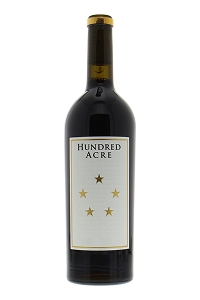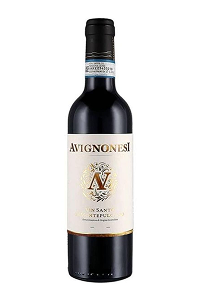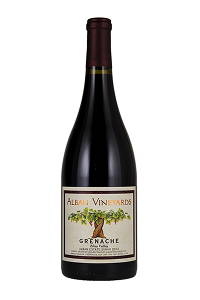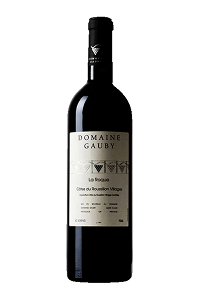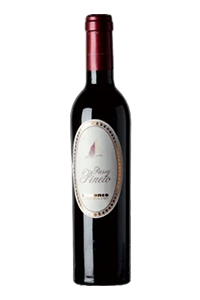Best sweet red wine: top buys of 2025
Sweet red wines offer a rich and indulgent way to enjoy a glass balancing ripe fruit flavors with a velvety finish. In this guide, we’ll share the best sweet red wines to try in 2025 plus expert tips on how to pair them with delicious meals.

By
Last updated:
Table of Contents
10 Top rated sweet red wines you need to know about
Fortification, Hundred Acre 2008
California
Recioto della Valpolicella Classico, Giovanni Allegrini 2011
Italy
Vin Santo di Montepulciano, Avignonesi 2010
Italy
Sweet Spot Cabernet Sauvignon, Groth Vineyards 2015
California
Grenache, Alban 2012
California
La Roque Côtes du Roussillon Villages, Domaine Gauby 2011
France
Magia Preta, Roxo Port Cellars 2011
California
Charlottes Reserve Barrel Select Dornfelder, Huber Estate 2013
California
Brachetto d’Acqui Passrì Pineto, Marenco 2012
Italy
Above we have curated the top rated sweet red wines in 2025 complete with tasting notes and expert sweet red wine recommendations to help you explore the best options available this year.
What is sweet red wine and how is it made?
Sweet red wine is made through processes that captivate its juicy fruit character and a winemaking technique that preserves natural sugars while drawing out intense color and structured tannins.
Let’s see in detail how sweet red wine is made:
- Crushing: grapes undergo gentle crushing to release juice along with skins and seeds initiating the extraction of deep pigments, tannins and aromatic compounds.
- Fermentation and maceration: the juice is left to ferment in contact with the grape skins. To retain sweetness, fermentation is deliberately halted early typically by chilling or adding sulfur dioxide ensuring residual sugar remains. In fortified sweet wines (such as Port) grape spirit is added to halt yeast activity and preserve natural sugars, creating a sweeter and more robust style.
- Aging: post fermentation, the wine matures in stainless steel vessels or oak barrels allowing flavors to integrate and deepen while maintaining the desired sweetness profile.
The sweet red wine grape varieties necessary to produce this style of wine are selected not just for sugar levels but also for their aromatic complexity and color intensity. These include:
Curiosity: the vivid red hues characteristic of sweet red wines derive from anthocyanins, strong anti-oxidant pigments naturally residing in grape skins.
Sweet red wine types: the variations in the production style
Sweet red wine types aren’t defined by a single style! They span from lightly sparkling and refreshing to rich, fortified expressions. To better understand the different sweet red wine kinds, consider these three main production styles:
- Early fermentation stop: fermentation is halted before all sugars convert to alcohol, preserving natural sweetness and creating a juicy, smooth wine.
- Secondary fermentation: usually used for sparkling versions such as Lambrusco, secondary fermentation in tanks or bottles adds natural bubbles while retaining sweetness.
- Fortification: adding spirits (like brandy) boosts alcohol content and sweetness producing rich, intense wines like Port, Banyuls and some styles of Lambrusco.
- Late harvest: grapes are left on the vine longer to achieve higher sugar content before picking (mostly used in Passito and Recioto style wines).
- Brief skin contact: limiting time grape skins stay with juice reduces tannins and color intensity resulting in softer, sweeter reds.
How residual sugar shapes the flavor of sweet red wines
Sweetness in red wine comes from residual sugar that isn’t fully converted into alcohol due to halts in fermentation or late harvesting, giving the wine its luscious, smooth character.
It can range from barely sweet to extremely sweet red wine and each level affects the wine’s texture, balance and flavor. The table below breaks down sweet red wines by sweetness level, showing how each degree, from semi sweet to sweeter types of red wine, shapes taste and pairing potential.
| Sweetness | Top Picks & Producers | Common Varietals | Residual Sugar |
|---|---|---|---|
| Semi Sweet Red Wine | Montelocco Lambrusco by Venturini Baldini (Italy) | Some Lambrusco, Dornfelder | 4–16 g/L |
| Medium Sweet Red Wine | Late Harvest Zinfandel by Dashe (California) | Brachetto d’Acqui, some Zinfandel | 16–45 g/L |
| Sweet Red Wine | Recioto della Valpolicella Classico La Roggia 2021, Speri (Italy) | Recioto della Valpolicella, Banyuls | 45–100 g/L |
| Very Sweet Red Wine | Madeira Colheita Malmsey Single Harvest 1988, Blandy’s (Portugal) | Vintage Port, Sweet Madeira | 100+ g/L |
Smooth sweet red wine: softness meets sweetness
Once you’ve figured out your preferred sweetness level the next step is choosing the texture! If you enjoy a gentle, velvety mouthfeel, smooth sweet red wine is the way to go. These wines are typically low in tannins with ripe fruit flavors and a plush finish.
Our pick: Roscato Rosso Dolce, a velvety, fruit forward Italian red with low tannins and smooth mouthfeel.
Fizzy sweet red wine: light bubbles, bold flavor
Fizzy sweet red wine offers a fun twist combining the playful sparkle of bubbles with the indulgence of ripe fruits. Styles like Lambrusco or Brachetto d’Acqui are perfect examples where gentle effervescence lifts sweetness and acidity. Fizzy sweet red wines are perfect matches for pizza, cheese or simply sipped by themselves are a refreshing alternative.
Our pick: Sparkling Red Brachetto by Fizz 56, a sweet Italian sparkling wine with a bright ruby red color, floral aromas and vibrant red fruit notes.
Non alcoholic sweet red wine
Non alcoholic sweet red wine is crafted by gently extracting alcohol using advanced methods like vacuum distillation or reverse osmosis ensuring the wine’s natural fruitiness and sweetness remain intact. While the opposite of a sweet red wine with high alcohol content, which often gains intensity through fortification or late harvest techniques, non alcoholic versions aim to deliver flavor and body without the buzz.
Perfect companions for spicy cuisine or treats, here are our 3 top picks of alcohol free sweet red wine:
- Non alcoholic red wine by Missing Thorn (California)
Food pairing suggestions: light pasta dishes or berry desserts - Non alcoholic red wine by Elivo Cardio Zero (Spain)
Food pairing suggestions: roasted root vegetables or and hearty bean stews. - Oddbird GM non alcoholic red (France)
Food pairing suggestions: spicy Asian dishes or dark chocolate desserts.
Sweet red wine food pairing: how to balance sweetness
Sweet red wine food pairing can be a delightful yet tricky art. The natural sugar and rich fruit flavors need balance to avoid overpowering dishes or clashing with flavors. To help you navigate sweet red wine food pairings we’ve put together some delicious pairing ideas to try out at your next get together with friends!
| Food | Sweet Red Wine | Grape Variety | Type & Structure |
|---|---|---|---|
| Soft Cheese, Pancakes, Light Snacks | Cabernet Sauvignon 2012 – Sweet Valley Wines (California) | Cabernet Sauvignon | Sweet, natural blueberry flavors, slightly effervescent finish |
| Seafood Dishes, Paella, Legume Salads | Bandol Rouge 2020 – Domaine de Terrebrune (France) | Mourvèdre | Semi-sweet, light-bodied, refreshing, citrus and berry notes |
| Spicy Cuisine, Pasta with Rich Sauces | Triple Block Pinot Noir 2018 – Sweet Cheeks Winery (Oregon) | Zinfandel, Merlot, Syrah, Cabernet Sauvignon | Sweet finish, rich, smooth, hints of mocha and vanilla |
| Fried Seafood, Italian Street Food, Gelato | Dolce Fiore Lambrusco – Alfredo Bertolani (Italy) | Malbo Gentile, Salamino, Ancellotta | Sweet, intense, ruby colored, persistent bubbles, velvety texture |
| Spiced Desserts, Braised Meats, Pâtés | Banyuls Rimage 2004 – Domaine du Mas Blanc (France) | Grenache Noir | Sweet, fortified, rich, velvety, intense notes of dried fig |
| Mushrooms, Roast Chicken and Turkey, Dried Fruits | Hafen Dornfelder 2012 – Huber Estate (California) | Dornfelder | Very sweet, smooth and silky, gentle acidity, a hint of dark chocolate |
| Fruit Salads, Light Aged Cheese | Late Harvest Zinfandel 2019 – Dashe Cellars (California) | Pinot Noir, Zinfandel | Semi sweet, silky smooth texture, pomegranate and dark cherry flavors |
| Rustic Soups, Rice Dishes, Grilled Vegetables | Estate Rioja Tinto 2021 – Villota (Spain) | Tempranillo | Semi sweet, full bodied, smooth and fruit forward, spice on the finish |
California sweet red wine: the benefits of diverse microclimates
California stands as the powerhouse of U.S. wine production with its best sweet red wines gaining increasing acclaim. Most iconic sweet reds hail from the West Coast, especially California’s renowned regions like Napa Valley and Sonoma County.
These areas benefit from diverse microclimates (warm days balanced by cool nights) which help grapes develop ripe sugars while preserving acidity. Modern winemaking techniques such as temperature controlled fermentation and precise blending, allow wine makers to craft solid California sweet red wines.
Lesser known spots like Central Valley and Anderson Valley also contribute to the US production showcasing unique sweet red styles! Below is a snapshot of key regions, grape varieties and popular sweet red wines to try:
| Region | Grape | Top to Try | Characteristics |
|---|---|---|---|
| Sonoma County, CA | Zinfandel | Old Vines Zinfandel Port 2006 by Mayo Family Ricci Vineyard | Soft and sweet profile, layers of bright cherry and wild boysenberry |
| Napa Valley, CA | Cabernet Sauvignon | Sweet Spot Cabernet Sauvignon 2015 by Groth | Refreshing mouthfeel, silky smooth finish, sweet aromas of dark fruit |
| Central Coast, CA | Zinfandel, Syrah | Toucanet Sweet Dessert Wine 2009 by Toucan Wines | Light to medium-bodied, flavours of bright red fruits, fresh floral notes, crisp finish |
| Paso Robles, CA | Grenach, Syrah | Sweet Clementine 2010 by Clos Solene | Bright, lively, creamy, fruity aromas and flavors of berry custard pie |
| Mendocino, CA | Malbec | Sweet Malbec 2013 by Yorkville Cellars | Fine-grained tannins, bright acidity, balanced structure, persistent finish |
Sweet red wine varieties: the blends behind the flavor
Red sweet wines showcase a diverse spectrum of grape types, each bringing its own character in terms of aroma, sugar concentration, and mouthfeel. Ranging from softly effervescent to intensely fortified, these wines are thoughtfully made using grapes that ripen with higher natural sugars or flourish in cooler regions.
The main sweet red wine varieties include:
The section below takes you through some popular sweet red wines highlighting their flavor profiles and structural characteristics.
Brachetto: the floral heart of Piedmont
Brachetto is a lightly sparkling sweet red wine from Piedmont (Italy) celebrated for its aromatic sweetness and delicate bubbles. Bursting with vibrant notes of fresh strawberries, raspberries and rose petals, it delivers a refreshing, fruity sip perfect for celebrations or pairing with light desserts.
Brachetto’s soft fizz and floral character make it an inviting choice for those who enjoy a sweet, fragrant wine. In the table below are Wine Curated’s recommended Brachetto wines:
Cardunaj Brachetto 2021 – Malabaila (Italy)
Flavor: Strawberry, red cherry, floral
Body & structure: Light tannins, crisp acidity
Brachetto d’Acqui Sparkling Wine – Banfi (Italy)
Flavor: Raspberry, rose, fresh red berries
Body & structure: Low tannins, bright acidity

Brachetto d\’Acqui 2014 – Rinaldi (Italy)
Flavor: Strawberry, raspberry, floral
Body & structure: Soft tannins, medium acidity
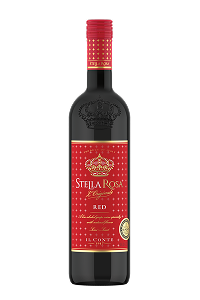
Stella Rosa Sweet Red Wine by Riboli Family Wines
Flavor: Wild berries, floral, sweet spice
Body & structure: Low tannins, balanced acidity
Sweet red wine serving temperature: debunking the myth of “room temperature”
Many people assume that all red wines should be served at room temperature but sweet reds often benefit from cooler temperatures that highlight their vibrant fruitiness and balance their sweetness.
While understanding the sweet red wine serving temperature, to properly savor it is important to consider other factors like tannin, acidity, aging potential and alcohol content (ABV). The table below offers a guide featuring these key attributes, helping you make informed choices to explore new good sweet red wines.
| Wine Name | ABV | Tannin / Acidity | Aging Potential | Aging Potential |
|---|---|---|---|---|
| Double Barrel 2009 – Sweet Valley Wines | 13,5% | Medium tannin, medium acidity | 10–15 years | 54–57° |
| Sweet Red Wine – Manzano | 11,7% | Low tannin, high acidity | 5–8 years | 50–54°F |
| Dolce Fiore Lambrusco – Alfredo Bertolani | 7% | Low tannin, high acidity | 2–4 years | 43–46°F |
| Solaire Reserve Grenache 1999 – Noon | 14% | Medium tannin, medium acidity | 15–20 years | 57–61°F |
| Rosa Regale Brachetto 2010 – Banfi | 7% | Very low tannin, high acidity | 3–5 years | 43–46°F |
How to store sweet red wine: patience is key
To truly preserve your sweet red wine’s charm, remember that patience is key. Investing in a wine fridge or a dedicated cellar can also make a big difference, especially for prized bottles. Here is how to store sweet red wine to keep it tasting good through time:
- Keep it cool and dark around 54–59°F is just right.
- Give corks moderate humidity (about 70%).
- Lay bottles on their side, corks don’t like to dry out!
- No shaking or strong smells.
- Once opened, reseal and chill to keep it fresh
- Avoid wild temperature swings, your wine likes a steady vibe.
How to choose the best sweet red wine for beginners?
Beginners often enjoy styles with moderate alcohol, fresh acidity and vibrant fruit notes. Look for wines labelled as “sweet”, “dolce” or “dessert” and don’t be afraid to explore sparkling options which can feel lighter on the palate. Classics like Brachetto d’Acqui, Lambrusco and Port are great entry points.
Here is our selection of approachable sweet red wines for beginners:
Once you’ve tried these wines, here are some helpful tips to navigate and choose the top sweet red wines on your own:
- Alcohol content: begin with sweet reds that have lower alcohol content to ease your palate.
- Food pairing: pair sweet wines with salty or spicy foods to create exciting flavor contrasts.
- Sweetness preference: start with mildly sweet wines and gradually explore richer ones.
Last but not least, don’t be afraid to explore quality wines at different price ranges. Some great sweet red wines are perfect for beginners!
FAQs Best sweet red wines
What kind of red wine is sweet?
Sweet red wine is any red wine that contains noticeable residual sugar which gives it a distinctly sweeter taste compared to dry reds. What kind of red wine is sweet ranges from lightly sweet, fruity styles like Brachetto to richer, fortified wines such as Port, offering a broad spectrum of sweetness levels.
What is a good sweet red wine for beginners?
For those new to sweet red wines, a good sweet red wine for beginners, like Brachetto d’Acqui or semi sweet Lambrusco are excellent choices. Their low tannin levels and gentle bubbles create an approachable experience that eases beginners into the world of sweet reds without overwhelming the palate or complexity.
What is a good sweet red wine to drink?
A good sweet red wine to drink depends on your taste and the occasion. Light, fruity wines like Brachetto or Lambrusco are refreshing and easy to enjoy while richer options like Port offer depth and complexity. Choose wines with balanced sweetness and acidity to suit desserts, spicy dishes or casual sipping moments.
What is the best sweet red wine?
The best sweet red wine varies by personal preference and occasion. Renowned options include Port for its richness and aging potential, Brachetto d’Acqui for light, aromatic sweetness and Kindzmarauli from Georgia for a unique semi sweet profile. Ultimately, the best choice balances flavor, sweetness and food pairing to suit your taste and moment.
What are the different types of sweet red wine?
Sweet red wines come in several types, including lightly sweet and fruity styles like Brachetto and Lambrusco, semi sweet wines such as Kindzmarauli and rich fortified wines like Port and Banyuls. These wines vary in sweetness, body and alcohol content, offering options from gently sparkling to full bodied.
What are sweet red wines?
Sweet red wines are red wines with noticeable residual sugar, giving them a sweeter taste than dry reds. They range from lightly sweet and fruity to richly sweet and fortified. Popular examples include Brachetto, Lambrusco and Port. These wines often pair well with desserts or spicy dishes, offering diverse flavors and textures.
What is the difference between sweet red wine and dry red wine?
The main difference between sweet red wine and dry red wine is the sugar content. Sweet reds contain noticeable residual sugar, giving them a fruity, sugary taste while dry reds have little to no residual sugar, resulting in a more tannic, bitter or acidic flavor. This affects pairing, body and overall wine experience.
Do organic sweet red wine contain sulfites?
Organic sweet red wines can contain sulfites, but typically in smaller quantities than regular wines. Sulfites naturally form during fermentation and are sometimes added to preserve freshness and prevent spoilage. Organic producers restrict added sulfites to meet certification rules, making these wines a gentler option for those sensitive to sulfites without compromising taste.
Is sweet red wine good for you?
Sweet red wine, enjoyed in moderation, may offer some health benefits like antioxidants and heart healthy compounds. However, its higher sugar and alcohol content means it should be consumed carefully. Excessive drinking can lead to negative effects. Always balance enjoyment with moderation for the best health outcome when drinking sweet red wine.
Can sweet red wine be aged?
Sweet red wine can be aged, especially those with higher sugar and alcohol levels like Port or certain dessert wines. Aging enhances their complexity, flavors, and aroma. However, not all sweet reds are suitable for long aging; lighter styles are best enjoyed young. Proper storage is essential to preserve their quality over time.
How long does sweet red wine last after opening?
Sweet red wine typically lasts 3 to 5 days after opening if properly stored in the refrigerator with a tight seal. Its sugar content helps preserve freshness longer than dry wines. However, exposure to air gradually diminishes flavor and aroma, so it’s best to enjoy opened bottles promptly for optimal taste.
How many calories are in sweet red wine?
Sweet red wine contains roughly 120 to 160 calories per 5 ounce serving, depending on its sugar and alcohol content. Higher sugar and alcohol levels increase calorie count. For those watching intake, lighter, sweeter reds with lower alcohol typically have fewer calories. Moderation is key to enjoying sweet red wine without excess calorie consumption.
